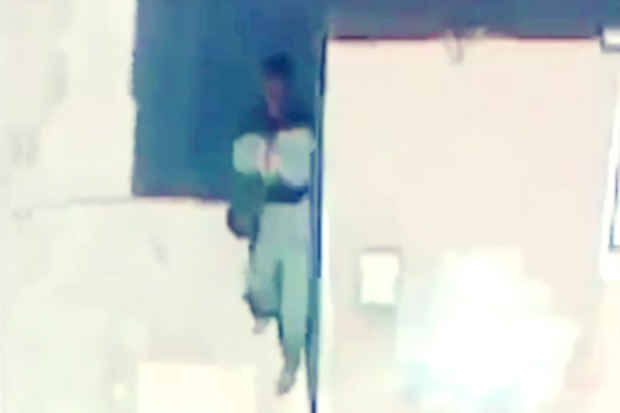“Death of a Cameraman” Exhibition
apexart

This event has ended.
On June 29, 2011, in the neighborhood of Karam Shami in Homs, Syria, a young man stands on the rooftop of a building. He uses his cell phone to document gunfire taking place in the streets below as his camera suddenly catches sight of a gunman on an adjacent balcony. For a brief instant, the cameraman and the gunman directly face each other. A single shot is fired. The camera falls, and with the cameraman’s death, image and reality collapse into one.
In the course of recent political events, the anonymous cameraman has emerged as a powerful new figure in the politics of representation. Not press photographers, not filmmakers, not artists, these men and women document the condition that surrounds them as a means to act, while at the same time carrying the biggest stakes in the telling of their story. In doing so, they create images that do not necessarily depict violence, but are visible manifestations of it; images that do not seek to create viewers, but witnesses. Death of a Cameraman revolves around a powerful moment in which the making of an image becomes a matter of life and death, with the camera functioning both as an extension of the eye and as a weapon.
The exhibition takes this phenomenon as a point of departure to look at the power of images to influence reality and alter the course of events. It asks about what’s at stake in the process of their making, and questions what it means to watch, and bear witness through them from a distance. The exhibition will by anchored by the brief video captured by the anonymous cameraman in Homs, to be understood as a document, and shown alongside the work of artists from around the world whose work sheds light on the space between the camera and eye, and between documentary, documentarists, and the documented.
Rabih Mroué’s Shooting Images directly investigates the phenomenon of death behind the camera. By means of an audiovisual re-enactment, Mroué explores the politics of a deadly encounter by acting as a critical commentator and interpreter—creating the concept of a “Double Shooting.” In Rudolf Steiner’s series Pictures of me, shooting myself into a picture, the artist fires a bullet at a camera, resulting in a hole that generates the image, and revealing the optical causality between puncture and exposure. Harun Farocki’s film, Eye/Machine explores the act of seeing in the context of technical processes of mediation, deconstructing the military rhetoric of “invasive” versus “non-invasive” imaging technologies. Hrair Sarkissian’s Execution Squares depict scenes of past criminal punishment in Syrian cities. Taken in 2008, the paradoxical absence of any signs of these events in these photographs not only references the ambivalent relationship between photography and violence, but reflects on how powerful cameras are as a device not only to render visible, but also to make invisible and overcome traumatic events. Adam Broomberg & Oliver Chanarin’s work Afterlife offers a re-reading of an iconic press photograph taken during the Iranian revolution in 1979 during a peak moment of violence, and poses the question of how to engage with such images—and what alternatives to passive spectatorship are available.
Martin Waldmeier is a curator from Basel, Switzerland, and currently a Ph.D. candidate in Visual Culture at Goldsmiths, University of London, writing a dissertation on translation as an artistic practice. Waldmeier was a Fulbright fellow in Visual and Critical Studies at the School of the Art Institute, Chicago, and received an MA in Modern and Contemporary Art History from the University of Bern. His current research interests include aesthetics of migration, images and narrations of conflict, cultural translations, and the politics of language in the present-day cultural industry.
Media
Schedule
from September 12, 2013 to October 26, 2013
Opening Reception on 2013-09-12 from 18:00 to 20:00